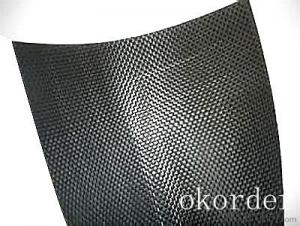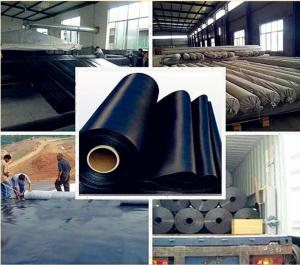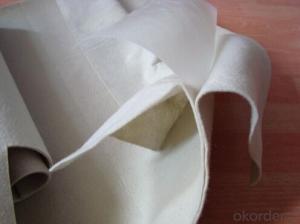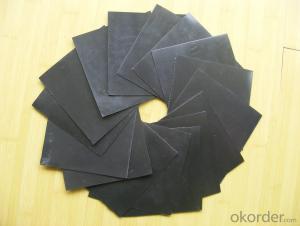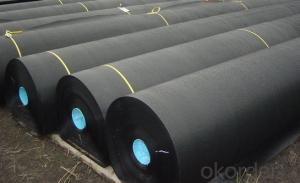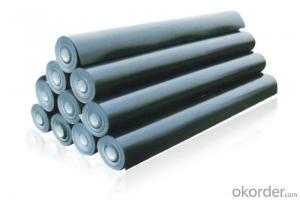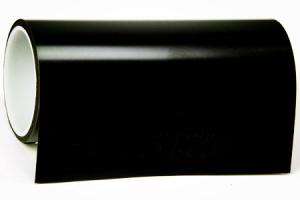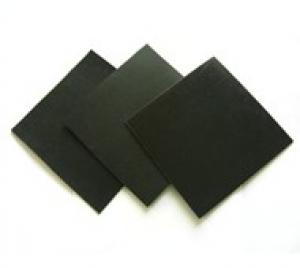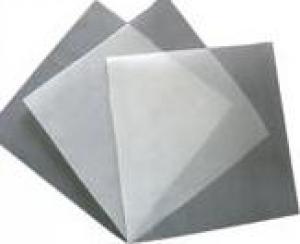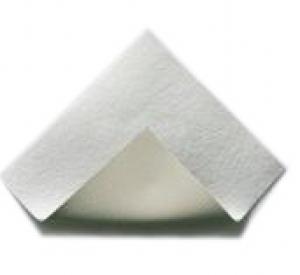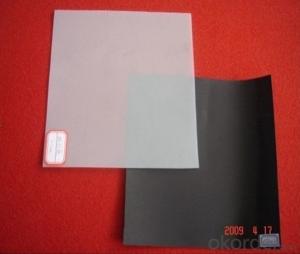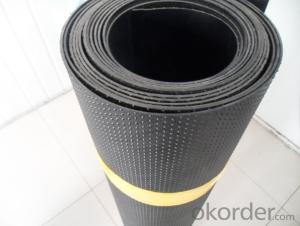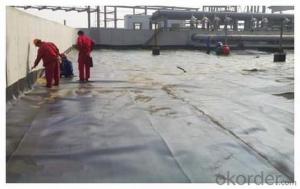Polypropylene Smooth Geomembrane Roll for the Agriculture Industry
- Loading Port:
- China main port
- Payment Terms:
- TT OR LC
- Min Order Qty:
- 1000 m²
- Supply Capability:
- 1000000 m²/month
OKorder Service Pledge
OKorder Financial Service
You Might Also Like
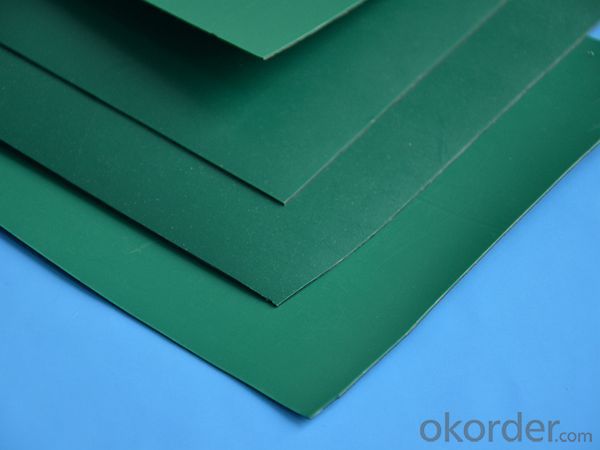
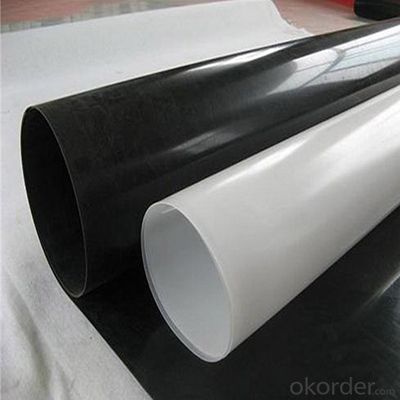
Product Introduction
HDPE
High Density Polyethylene (HDPE) is the high density version of PE plastic and is harder and denser than the LDPE, but is less ductile, and lighter than water. Climax HDPE Film / Sheet / Liner / Geomembrane has proved to be a boon especially for developing countries like India by playing an important role to prevent the air and groundwater pollution. The best thing is that it can be easily moulded and welded together and the use of UV Stabilizers improves its weather resistance. High Density Polyethylene Geomembrane lives up to the expectations which are demanded in today's world of environmental engineering. Climax HDPE's prime motive is to keep the Nature clean.
Strengths
Environmental Stress & Crack Resistance
Water Resistance
Chemical Resistance
UV and Thermal Weathering Resistance
Conformation to sub-soil movements
Tear Resistance
Puncture Resistance
Repairable
Recyclable
Very low permeability
Applications
Solid Waste Landfill for secured dumping of Hazardous Waste.
Lining of Fly Ash ponds.
Thermal / Hydro power plant.
Dumping of Radio Active waste.
Masking of concrete structures at places like Port, Jetty, Bridge.
Spill containment for Chemical and Petrochemical Industries.
Industrial Reservoirs
Lining of ETPs
Lining of Solar Evaporation Ponds / Sludge Ponds etc..
Foundation Lining, Floor Lining
Our Service
Quality assurance
1.On a regular basis or as per your request,we entrust national testing agencies to conduct quality inspections
2. Strictly in accordance with the ISO9001-2008 international quality system standard,we monitor and manage the whole process throughout production,quality testing,and measurement to ensure product quality
3. For quality-related construction delay or substandard construction(except for damage or losses due to customer’s responsibility or irresistible natural disasters),we have refunding,replacement,and repair services.We will respond to customers’ feedbacks on quality issues within 24 hours.
Packaging & Shipping
Packing: PLASTIC FILM INSIDE, AND WOVEN BAG OUTSIDE
Shipping: About 15 days after receipt the deposit
FAQ:
Q: What kind of payments does jenor support?
A: T/T, L/C, Cash are accepted.
Q: Do you charge for the samples?
A: Accordeing to our company policy, the samples are free, we only charge the freight fee. And we will return the freight fee during the next order.
Q: Can you produce according to customers' design?
A: Sure, we are professional manufacturer, OEM and ODM are both welcome.
Q: Do you have other products?
A: Yes, please check the pictures:
- Q:Can geomembranes be used in geotechnical applications?
- Yes, geomembranes can be used in geotechnical applications. Geomembranes are impermeable sheets made of synthetic materials that can be used to control seepage, contain liquids or gases, and provide stability in various geotechnical projects such as landfills, dams, tunnels, and soil stabilization. They are highly effective in preventing groundwater contamination and ensuring the structural integrity of these geotechnical structures.
- Q:How are geomembranes tested for puncture resistance?
- Geomembranes are tested for puncture resistance through standardized laboratory tests. These tests typically involve using a sharp probe or a blunt object to apply a specific amount of force to the geomembrane and measuring the force required to puncture or tear the material. This helps determine the material's ability to withstand punctures and provides valuable data for assessing its performance in real-world applications.
- Q:How to construct the bottom of geomembrane oil tank?
- Construction of oil tank is more troublesome, and it should comform to construction drawings. There are professional welders and welding equippment, you may start weld after pavement.
- Q:How do geomembranes contribute to the prevention of groundwater pollution?
- Geomembranes contribute to the prevention of groundwater pollution by acting as a barrier between contaminants and the underlying soil and groundwater. They are impermeable liners made of synthetic materials that are installed in various applications, such as landfills, industrial storage ponds, and wastewater treatment plants. By preventing the migration of pollutants through the soil and into the groundwater, geomembranes help protect this vital resource from contamination, ensuring its safety for human consumption and environmental sustainability.
- Q:composite geo-membrane, two cloths and one membrane geomembrane 6 meters thick material how to use multiple sets of quotas
- 10 meters dam seepage-proof construction, 1000g composite membrane quotas are not accurate, depth 6 meters, each design Institute are not the same, two cloths one membrane composite membrane 800 grams per square meter is sufficient .
- Q:Are geomembranes suitable for agricultural applications?
- Yes, geomembranes are suitable for agricultural applications. They provide effective containment and protection for various agricultural activities such as irrigation, water storage, waste management, and soil protection. Geomembranes help prevent water leakage, soil erosion, and contamination, thereby enhancing crop yield and environmental sustainability in agriculture.
- Q:Can geomembranes be used in aquaculture facilities?
- Yes, geomembranes can be used in aquaculture facilities. They are commonly employed as liners for ponds, tanks, and raceways to prevent seepage and leakage of water. Geomembranes provide a barrier that helps maintain water quality and prevent contamination from surrounding soil and groundwater.
- Q:How are geomembranes used in pond liners?
- Geomembranes are used in pond liners to provide a durable and impermeable barrier that prevents water seepage into the surrounding soil. They are installed as a lining material for ponds, ensuring that the water stays contained and does not impact the environment or surrounding structures.
- Q:What are the design considerations for geomembranes in canal and reservoir covers?
- Some design considerations for geomembranes in canal and reservoir covers include waterproofing capabilities, durability, resistance to UV degradation, flexibility, and puncture resistance. Additionally, factors such as installation methods, compatibility with underlying soil, and cost-effectiveness are also important considerations.
- Q:What is the classification of film resistance?
- Thin film resistor is a kind of high precision resistor. Thin film resistor is different from the thick film chip resistor and the latter dominates the market. It is a thin film chip fixed resistor with high accuracy and low temperature coefficient. Thin film resistor is made by evaporating a resistivity material on the surface of an insulting material, and the insulting material of such resistor is generally ceramic substrate. Thin film resistor is made by evaporating a certain resistivity material on the insulating material, and the major categories are: 1. The carbon film resistor is made by depositing crystallize carbon on a ceramic rod framework. Carbon film resistors have low cost. Stable performance. Wide resistance range. It has low temperature coefficient and voltage coefficient, and is the most widely used resistor at present. 2. The metal film resistors. Coating the alloy material on the surface of the ceramic rods framework by vacuum evaporation . Metal film resistors have higher precision, good stability, and low noise and temperature coefficient than carbon film resistors, thus is widely applied in the instrumentation and communications equipment. 3. Metal oxidation film resistors is made by deposited a metallic oxide layer on the insulating rod. Because it itself is an oxide, it is stable at high temperature and thermal shock resistance with strong load capacity. 4. The synthetic membrane resistor is made by coating the conductive composite suspension liquid on the substrate, therefore, it is also called paint film resistor. Due to its grainy structure of the conductive layer, it produces a lot of noises, and has low precision. It is mainly used in the manufacturing of resistors with high pressure and resistance and small resistors.
1. Manufacturer Overview |
|
|---|---|
| Location | |
| Year Established | |
| Annual Output Value | |
| Main Markets | |
| Company Certifications | |
2. Manufacturer Certificates |
|
|---|---|
| a) Certification Name | |
| Range | |
| Reference | |
| Validity Period | |
3. Manufacturer Capability |
|
|---|---|
| a)Trade Capacity | |
| Nearest Port | |
| Export Percentage | |
| No.of Employees in Trade Department | |
| Language Spoken: | |
| b)Factory Information | |
| Factory Size: | |
| No. of Production Lines | |
| Contract Manufacturing | |
| Product Price Range | |
Send your message to us
Polypropylene Smooth Geomembrane Roll for the Agriculture Industry
- Loading Port:
- China main port
- Payment Terms:
- TT OR LC
- Min Order Qty:
- 1000 m²
- Supply Capability:
- 1000000 m²/month
OKorder Service Pledge
OKorder Financial Service
Similar products
New products
Hot products
Hot Searches
Related keywords
